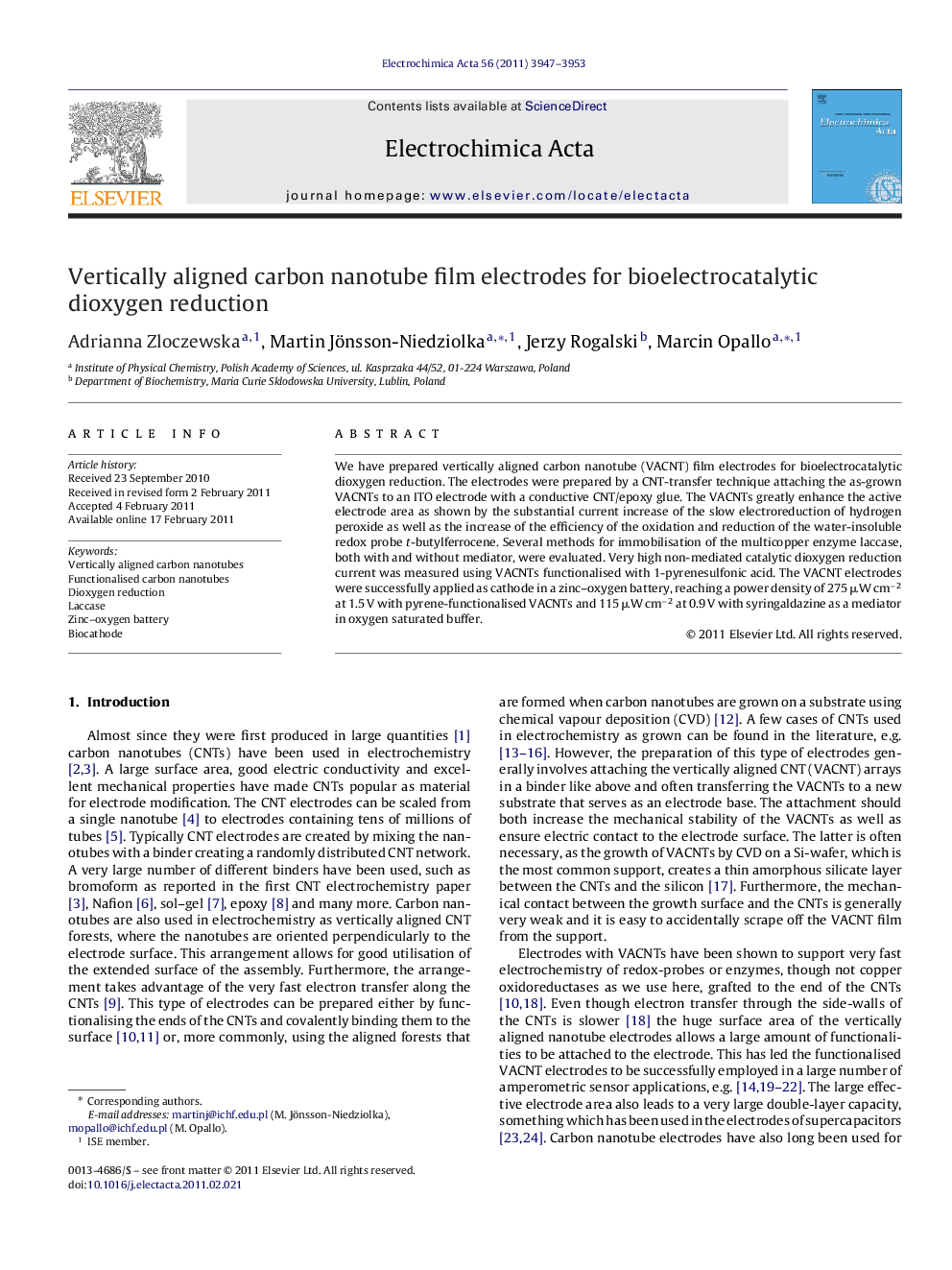| Article ID | Journal | Published Year | Pages | File Type |
|---|---|---|---|---|
| 190248 | Electrochimica Acta | 2011 | 7 Pages |
We have prepared vertically aligned carbon nanotube (VACNT) film electrodes for bioelectrocatalytic dioxygen reduction. The electrodes were prepared by a CNT-transfer technique attaching the as-grown VACNTs to an ITO electrode with a conductive CNT/epoxy glue. The VACNTs greatly enhance the active electrode area as shown by the substantial current increase of the slow electroreduction of hydrogen peroxide as well as the increase of the efficiency of the oxidation and reduction of the water-insoluble redox probe t-butylferrocene. Several methods for immobilisation of the multicopper enzyme laccase, both with and without mediator, were evaluated. Very high non-mediated catalytic dioxygen reduction current was measured using VACNTs functionalised with 1-pyrenesulfonic acid. The VACNT electrodes were successfully applied as cathode in a zinc–oxygen battery, reaching a power density of 275 μW cm−2 at 1.5 V with pyrene-functionalised VACNTs and 115 μW cm−2 at 0.9 V with syringaldazine as a mediator in oxygen saturated buffer.
Research highlights► Vertically aligned carbon nanotube electrodes were prepared. ► A transfer technique using home-made conducting epoxy was employed. ► The electrodes were used as a support for bioelectrocatalytic oxygen reduction. ► High non-mediated catalytic oxygen reduction currents ware measured. ► The electrodes were used as efficient cathodes in a Zn–O2 battery.
